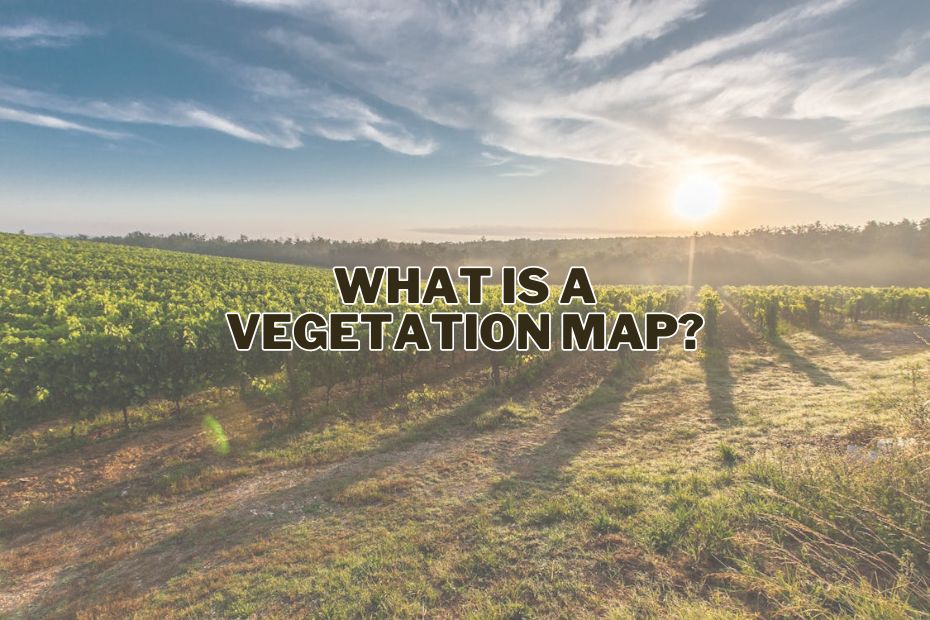Vegetation maps serve as invaluable tools in understanding and analyzing the distribution and composition of plant life across different geographical regions. These maps provide essential insights into ecosystems, biodiversity, and environmental changes, making them indispensable for various fields, including ecology, conservation, urban planning, and agriculture.
A vegetation map is a specialized type of land cover map highlighting the distribution and types of vegetation across a specified area.
What Exactly is a Vegetation Map?
At its core, a vegetation map is a graphical representation of the spatial distribution of vegetation types within a particular area. These maps classify vegetation based on factors such as species composition, density, height, and canopy cover. By utilizing various data sources and advanced technologies, including remote sensing, Geographic Information Systems (GIS), and field surveys, experts create detailed and accurate depictions of vegetation patterns.
The Creation of Vegetation Maps
The process of creating a vegetation map involves a detailed analysis of satellite images, which capture the varying wavelengths of light reflected off the Earth’s surface. The key to this analysis lies in understanding how different types of vegetation absorb and reflect sunlight, particularly in the near-infrared spectrum.
This differentiation allows scientists to classify the vegetation density and type, from lush forests to sparse deserts, providing a comprehensive overview of the region’s flora.
Components of a Vegetation Map
A typical vegetation map comprises several key components:
- Legend: This section provides a key to interpret the symbols and colors used to represent different vegetation types on the map.
- Scale: Indicates the relationship between distances on the map and actual distances on the ground.
- Data Sources: Describes the datasets and methodologies employed in generating the map, such as satellite imagery, aerial photographs, or ground surveys.
- Classification System: Explains the criteria used to categorize vegetation types, which may include physiological characteristics, growth forms, or ecological attributes.
- Accuracy Assessment: Details the methods used to validate the accuracy of the map through ground truthing or comparison with other reference datasets.
Importance of Vegetation Mapping
Vegetation mapping serves a multitude of purposes, contributing to both scientific research and practical applications:
Environmental Monitoring and Management
By monitoring changes in vegetation cover over time, researchers can assess the impacts of climate change, deforestation, urbanization, and other human activities on ecosystems. This information is crucial for developing effective conservation strategies and sustainable land management practices.
Biodiversity Conservation
Vegetation maps help identify areas of high biodiversity, such as tropical rainforests, wetlands, and coral reefs. Conservationists can prioritize these areas for protection and restoration efforts to safeguard endangered species and their habitats.
These maps aid in identifying critical habitats, monitoring endangered species, and implementing targeted conservation strategies. By charting the distribution of vegetation types, conservationists can prioritize areas for protection and restoration, tailoring their efforts to the unique needs of each ecosystem.
Agriculture and Land Use Planning
In agriculture, vegetation maps aid in crop suitability assessment, soil mapping, and precision farming. Planners use these maps to make informed decisions regarding land allocation, zoning regulations, and infrastructure development while minimizing environmental impacts.
Disaster Risk Reduction
During natural disasters such as wildfires, floods, or landslides, vegetation maps provide valuable information for emergency response and disaster mitigation efforts. They help identify vulnerable areas, assess potential hazards, and plan evacuation routes.
Challenges and Limitations
Despite their utility, vegetation maps are not without challenges:
Data Availability and Quality
Obtaining accurate and up-to-date data for vegetation mapping can be challenging, especially in remote or inaccessible areas. Furthermore, inconsistencies in data sources and classification methods may affect the reliability and comparability of maps.
Scale and Resolution
The scale and resolution of vegetation maps influence their applicability for different purposes. While coarse-resolution maps provide a broad overview of vegetation patterns at regional or global scales, fine-resolution maps offer detailed insights at the local level but require extensive computational resources and expertise.
Interpretation and Validation
Interpreting vegetation maps requires specialized knowledge of ecology, botany, and remote sensing techniques. Additionally, validating the accuracy of these maps through ground surveys or field observations can be labor-intensive and time-consuming.
Future Horizons: The Evolution of Vegetation Mapping
As technology advances, the potential of vegetation maps expands. Innovations in satellite imagery, AI, and machine learning are paving the way for even more detailed and accurate mapping. These future maps could offer real-time monitoring of vegetation health, predict changes in land cover, and provide actionable insights for combating environmental threats.
The integration of vegetation maps with other types of geospatial data will further enhance our understanding of the Earth’s ecosystems, opening new frontiers in environmental science, conservation, and land management.
Conclusion:
In conclusion, vegetation maps play a vital role in understanding the distribution, dynamics, and ecological significance of plant communities worldwide. With advances in technology and interdisciplinary collaboration, these maps continue to evolve as indispensable tools for environmental management, conservation planning, and scientific research.
FAQs: What is a Vegetation Map?
How are vegetation maps created?
Vegetation maps are typically created using a combination of remote sensing data, Geographic Information Systems (GIS), and field surveys. Experts analyze satellite imagery, aerial photographs, and ground observations to classify and map different vegetation types.
What are the main applications of vegetation mapping?
Vegetation mapping finds applications in environmental monitoring, biodiversity conservation, agriculture, land use planning, and disaster risk reduction. It helps scientists, policymakers, and land managers make informed decisions to protect ecosystems and sustainably manage natural resources.
Can vegetation maps be used for predicting future changes in ecosystems?
Yes, vegetation maps can inform predictive modeling of future ecosystem changes by analyzing historical trends and projecting potential scenarios based on climate projections, land use changes, and other factors.
